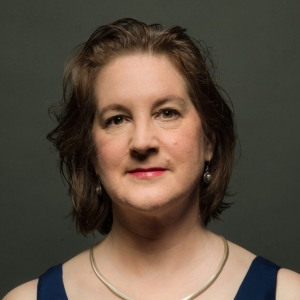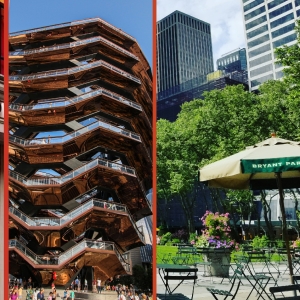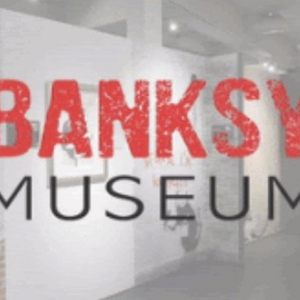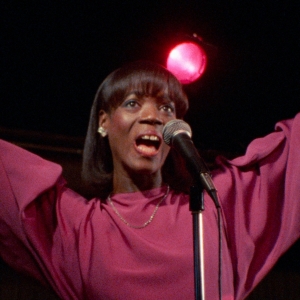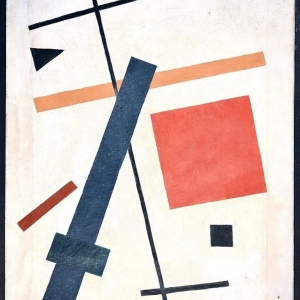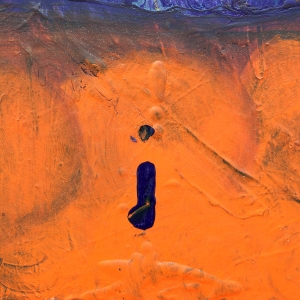
At a Glance
Time Needed: 180 min.
Ages: All
Allows Food/Drink: No
Luggage Storage: Yes
11 W 53rd St, New York, NY 10019 Get Directions
Museum of Modern Art (MoMA) Videos
What would happen if you gave an artist a camera to film their day? What would they capture? We sent artists a Super 8mm camera and just 4.5 minutes of film to capture 24 hours of their life. Artist Lady Pink shares a vibrant glimpse into her life, blending creativity, reflection, and play. 📽️ Watch the full video to experience the full picture. Subscribe to get the latest videos: http://mo.ma/subscribe Explore our collection online: http://mo.ma/art Plan your visit in person: http://mo.ma/visit Commit to art and ideas. Support MoMA by becoming a member today: https://moma.org/join The comments and opinions expressed in this video are those of the speaker alone, and do not represent the views of The Museum of Modern Art, its personnel, or any artist. #art #museumofmodernart #moma #museum #modernart
Of all the senses, touch is the biggest taboo in a museum. But what if allowing touch is the only way to truly experience the work? In our latest episode of Art and the Senses, we follow two stories. The first shows how Yoko Ono challenged the rules of art in her "Painting to Be Stepped On" (1960), a piece of canvas laid on the floor, asking viewers to touch it. The second takes us on a “touch tour,” a long-running Access program at MoMA in which educators lead visitors who are blind or have low vision through the galleries to experience works through touch, a sense that shapes perception, memory, and emotional connection. Hear from Ono, John Lennon, curators, conservators, artists, and museum educators as they explore one of the most powerful and charged senses. As Connor Monahan, Ono’s studio manager says, “Touch is something that creates connection, and connection creates communication, and communication is what people need to create peace.” Subscribe to get the latest videos: http://mo.ma/subscribe Explore our collection online: http://mo.ma/art Plan your visit in person: http://mo.ma/visit Commit to art and ideas. Support MoMA by becoming a member today: https://moma.org/join The comments and opinions expressed in this video are those of the speaker alone, and do not represent the views of The Museum of Modern Art, its personnel, or any artist. #yokoono #contemporaryart #interactiveart #artconservation #participatoryart #conceptualart #museumaccessibility #art #museumofmodernart #moma #museum #modernart
A legend of New York’s counterculture, Agosto Machado reflects on a time when art was democratic, community-driven, and alive with possibility. Check out the full artist profile to learn more about the artist who's spent 50 years turning loss into living shrines. What memory do you think the future should learn from? Subscribe to get the latest videos: http://mo.ma/subscribe Explore our collection online: http://mo.ma/art Plan your visit in person: http://mo.ma/visit Commit to art and ideas. Support MoMA by becoming a member today: https://moma.org/join The comments and opinions expressed in this video are those of the speaker alone, and do not represent the views of The Museum of Modern Art, its personnel, or any artist. #art #museumofmodernart #moma #museum #modernart
In rehearsal, Stephen Prina reveals the core of his practice– art can be anything—song, text, or paint—and it always comes from the culture around us. Check out the full artist profile to discover the layers behind his practice. Subscribe to get the latest videos: http://mo.ma/subscribe Explore our collection online: http://mo.ma/art Plan your visit in person: http://mo.ma/visit Commit to art and ideas. Support MoMA by becoming a member today: https://moma.org/join The comments and opinions expressed in this video are those of the speaker alone, and do not represent the views of The Museum of Modern Art, its personnel, or any artist. #art #museumofmodernart #moma #museum #modernart
“Joni Mitchell taught me that a pop song could be art.” Get a rare behind the scenes glimpse at artist, composer and musician Stephen Prina’s rehearsal of “Concerto for Modern, Movie and Pop Music,” alive performance where pop songs, original music, and cultural references collide to form new meaning. Prina transforms music into a shared, living experience by inviting the audience into his creative process. Subscribe to get the latest videos: http://mo.ma/subscribe Explore our collection online: http://mo.ma/art Plan your visit in person: http://mo.ma/visit Commit to art and ideas. Support MoMA by becoming a member today: https://moma.org/join The comments and opinions expressed in this video are those of the speaker alone, and do not represent the views of The Museum of Modern Art, its personnel, or any artist. #StephenPrina #performanceart #behindthescenes #artistprofile #art #museumofmodernart #moma #museum #modernart
A museum visit can activate a lot of feelings. Take part in a somatic exercise that might help you process them. "The more that you can react to a sensation with curiosity and acceptance, the better you’re going to feel." – Emily Price Subscribe to get the latest videos: http://mo.ma/subscribe Explore our collection online: http://mo.ma/art Plan your visit in person: http://mo.ma/visit Commit to art and ideas. Support MoMA by becoming a member today: https://moma.org/join The comments and opinions expressed in this video are those of the speaker alone, and do not represent the views of The Museum of Modern Art, its personnel, or any artist. #art #museumofmodernart #moma #museum #modernart
More in Midtown West
More Museums
- The Tenement Museum
- New Museum
- International Center of Photography
- Museum at Eldridge Street
- National Museum of the American Indian
- National September 11 Memorial & Museum
- The Rubin Museum of Art
- Whitney Museum of American Art
- The Morgan Library & Museum
- Museum of Arts and Design
Museum of Modern Art (MoMA) Frequently Asked Questions
The closest subway stops to the Museum of Modern Art (MoMA) at 11 W 53rd St in New York City are:
1. Fifth Avenue/53rd Street Station: This station is served by the E and M trains. It's located just a short walk from MoMA, making it a convenient option.
2. 57th Street Station: This station is served by the N, Q, R, and W trains. It's a slightly longer walk to MoMA, but still within reasonable distance.
Both of these subway stops provide easy access to MoMA and are well-connected to other parts of the city.
As for recommendations, here are a few related to MoMA:
1. Top of the Rock Observation Deck: Located at the nearby Rockefeller Center, this observation deck offers stunning views of the city skyline, including Central Park. It's a great way to see New York from above.
2. St. Patrick's Cathedral: Situated just a few blocks away from MoMA, this iconic cathedral is a must-visit. Its stunning architecture and peaceful atmosphere make it a beautiful place to explore.
3. Central Park: MoMA is located just a short distance from Central Park. Take a leisurely stroll through the park, rent a bike, or have a picnic on the grass. It's a wonderful oasis in the heart of the city.
For the latest subway updates and service changes, you can visit the official website of the Metropolitan Transportation Authority (MTA) at https://new.mta.info/. This will provide you with real-time information on any disruptions or delays that may affect your travel plans.
The Museum of Modern Art (MoMA) is located at 11 West 53rd Street in New York City. The closest bus stops to MoMA are:
1. 5th Ave/W 53 St (northbound): This stop is served by the M1, M2, M3, M4, M5, M55, Q32, and QM2 buses. You can check for the latest bus updates [here](http://bustime.mta.info/).
2. 5th Ave/W 54 St (southbound): This stop is served by the M1, M2, M3, M4, M5, M55, Q32, and QM2 buses. You can check for the latest bus updates [here](http://bustime.mta.info/).
Please note that bus routes and schedules may be subject to change, so it's always a good idea to check for updates before your visit. Enjoy your time at MoMA!
The ideal length of time to plan for a visit to the Museum of Modern Art (MoMA) in New York City really depends on your level of interest in art and how much time you have available. MoMA is a world-renowned museum with an extensive collection, so it's easy to spend several hours exploring its galleries.
If you're a casual visitor or short on time, I would recommend allocating at least 2-3 hours to get a taste of the museum's highlights. This should give you enough time to see iconic works such as Van Gogh's "Starry Night," Picasso's "Les Demoiselles d'Avignon," and Warhol's "Campbell's Soup Cans."
However, if you're an art enthusiast or have a deep appreciation for modern and contemporary art, you might want to dedicate a full day to fully immerse yourself in MoMA's collection. This will allow you to explore the museum at a more leisurely pace, delve into lesser-known works, and perhaps take part in guided tours or attend special exhibitions.
Keep in mind that MoMA can get quite crowded, especially during peak tourist seasons, so it's a good idea to plan your visit during weekdays or opt for early morning or late afternoon hours to avoid the crowds.
Overall, whether you have a few hours or an entire day, MoMA is definitely worth a visit for art lovers and anyone interested in exploring the vibrant world of modern and contemporary art.
The Museum of Modern Art (MoMA) in New York City has several dining options available for visitors. Inside the museum, you will find three restaurants: The Modern, Cafe 2, and Terrace 5. These restaurants offer a range of dining experiences, from fine dining to casual fare, all within the museum's premises.
If you're looking for a quick bite or a coffee break, MoMA also has several cafes and coffee bars throughout the museum. These spots offer a variety of snacks, sandwiches, pastries, and beverages to keep you fueled during your visit.
However, it's important to note that outside food and drinks are not allowed inside the museum. This policy helps to maintain the cleanliness and preservation of the artwork on display. So, while you can enjoy a delicious meal or snack at one of MoMA's dining establishments, make sure to finish it before entering the galleries.
Additionally, if you're looking to bring your own food or have a picnic, MoMA has a beautiful outdoor sculpture garden where you can enjoy your meal. Just remember to dispose of any trash properly and respect the museum's guidelines.
Overall, MoMA offers a variety of dining options to suit different tastes and preferences, ensuring that you can enjoy both the art and the culinary delights during your visit.
The Museum of Modern Art (MoMA) in New York City has a strict policy regarding luggage storage. For security reasons, large bags, suitcases, and backpacks are not allowed inside the museum. However, they do offer a complimentary coat check service where you can leave your coats, umbrellas, and smaller bags. It's important to note that the coat check is subject to availability, so it's always a good idea to travel light when visiting MoMA. If you have larger items or luggage that you need to store, there are several luggage storage services available near the museum that you can utilize for a fee. These services provide secure storage options for your belongings, allowing you to explore the museum and enjoy your visit without any worries.
Absolutely! The Museum of Modern Art (MoMA) in New York City is a fantastic destination for visitors from other countries and for non-English language speakers. MoMA is internationally renowned for its extensive collection of modern and contemporary art, featuring works by world-renowned artists such as Vincent van Gogh, Pablo Picasso, Frida Kahlo, and Andy Warhol.
One of the great things about MoMA is that it provides multilingual support to cater to its diverse audience. The museum offers audio guides in multiple languages, including Spanish, French, German, Italian, Japanese, and Mandarin. These guides provide insightful commentary on the artworks, allowing visitors to fully immerse themselves in the museum's collection.
Additionally, MoMA has information available in various languages throughout the museum, including signage, brochures, and exhibition materials. This ensures that non-English speakers can easily navigate the museum and understand the context and significance of the artworks on display.
Furthermore, MoMA regularly hosts special exhibitions and events that showcase art from around the world, making it an even more compelling destination for international visitors. Whether you're a seasoned art enthusiast or just curious about modern and contemporary art, MoMA offers a rich and engaging experience for visitors of all backgrounds and language abilities.
So, if you're visiting New York City and have an interest in art, culture, and history, be sure to add MoMA to your itinerary. It's a must-visit destination that will leave you inspired and captivated, regardless of your language proficiency.
The Museum of Modern Art (MoMA) in New York City is a fantastic destination for visitors of all ages. While there is no specific age range recommended, the museum offers a wide range of exhibits and programs that cater to different interests and age groups.
For families with children, MoMA has a dedicated space called MoMA PS1, which features interactive exhibits and activities designed especially for young visitors. Additionally, the museum offers family-friendly guided tours and workshops that engage children in a fun and educational way.
For adults, MoMA showcases an impressive collection of modern and contemporary art, including works by renowned artists such as Van Gogh, Picasso, Warhol, and Pollock. The museum also hosts temporary exhibitions that explore various themes and artistic movements.
Whether you're a seasoned art enthusiast or just curious about modern art, MoMA has something to offer everyone. So, don't hesitate to visit this iconic museum and immerse yourself in the world of contemporary art.
Videos


